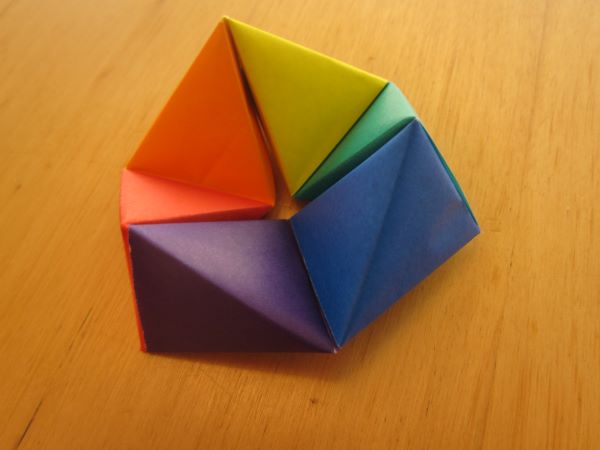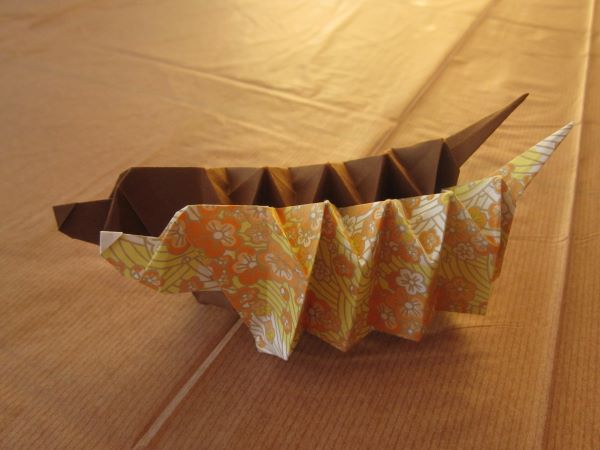
Rotating Tetrahedrons, designed by Tomoko Fuse
This origami model is a fidget. You can rotate the tetrahedrons endlessly. Kids love it. They don’t last forever, but that’s okay, just make more! I actually have a bunch of these lying around, because I include it in my origami class.
If you’d like to try this one, I recommend this Happy Origami video. It’s also possible to make one with a single sheet of paper, but I wouldn’t recommend it. This particular version uses six sheets of paper, so I can get the rainbow colors in, but it’s a bit of a challenge, so I don’t recommend it on first attempt.

